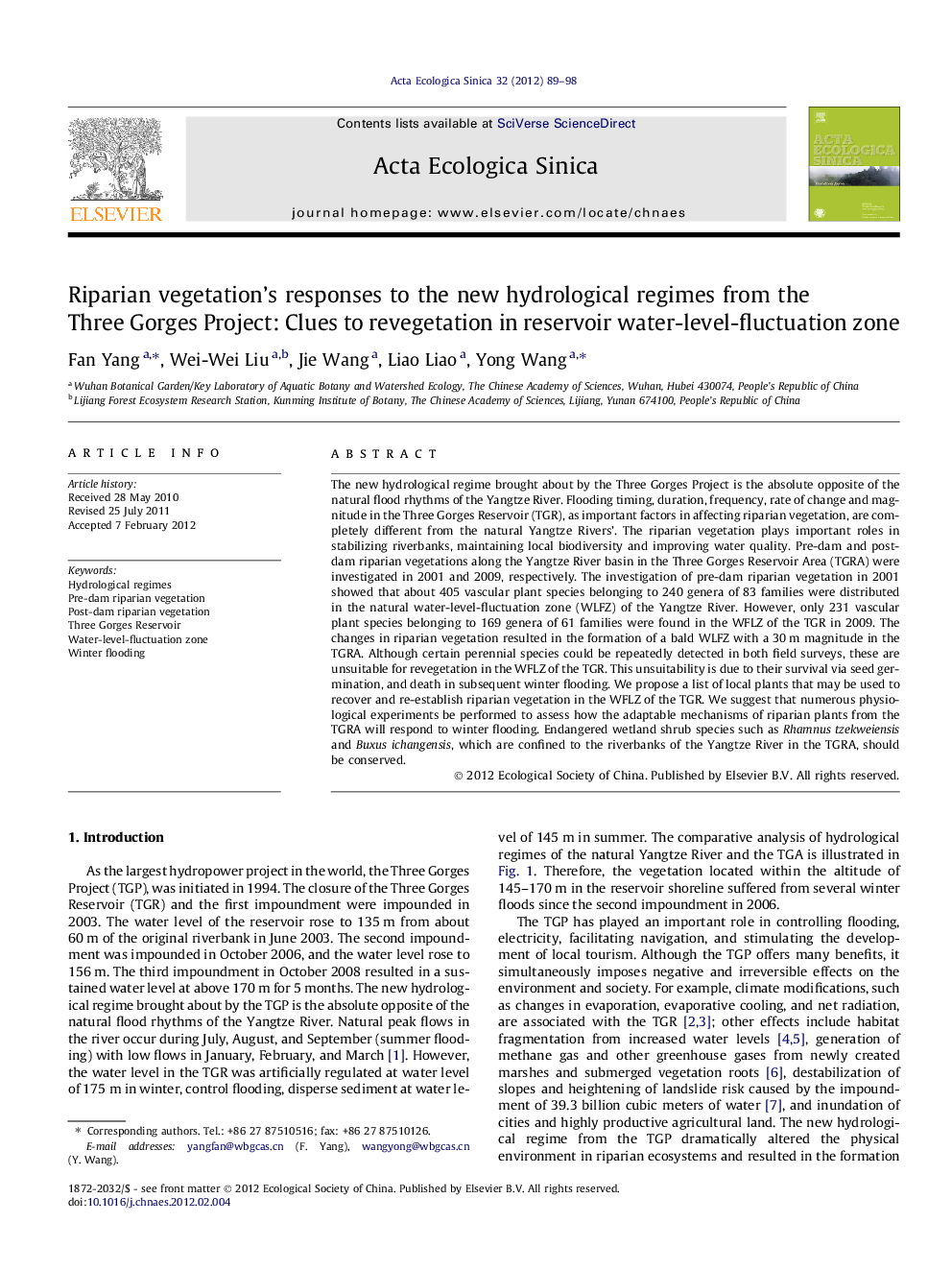| کد مقاله | کد نشریه | سال انتشار | مقاله انگلیسی | نسخه تمام متن |
|---|---|---|---|---|
| 4379999 | 1303957 | 2012 | 10 صفحه PDF | دانلود رایگان |

The new hydrological regime brought about by the Three Gorges Project is the absolute opposite of the natural flood rhythms of the Yangtze River. Flooding timing, duration, frequency, rate of change and magnitude in the Three Gorges Reservoir (TGR), as important factors in affecting riparian vegetation, are completely different from the natural Yangtze Rivers’. The riparian vegetation plays important roles in stabilizing riverbanks, maintaining local biodiversity and improving water quality. Pre-dam and post-dam riparian vegetations along the Yangtze River basin in the Three Gorges Reservoir Area (TGRA) were investigated in 2001 and 2009, respectively. The investigation of pre-dam riparian vegetation in 2001 showed that about 405 vascular plant species belonging to 240 genera of 83 families were distributed in the natural water-level-fluctuation zone (WLFZ) of the Yangtze River. However, only 231 vascular plant species belonging to 169 genera of 61 families were found in the WFLZ of the TGR in 2009. The changes in riparian vegetation resulted in the formation of a bald WLFZ with a 30 m magnitude in the TGRA. Although certain perennial species could be repeatedly detected in both field surveys, these are unsuitable for revegetation in the WFLZ of the TGR. This unsuitability is due to their survival via seed germination, and death in subsequent winter flooding. We propose a list of local plants that may be used to recover and re-establish riparian vegetation in the WFLZ of the TGR. We suggest that numerous physiological experiments be performed to assess how the adaptable mechanisms of riparian plants from the TGRA will respond to winter flooding. Endangered wetland shrub species such as Rhamnus tzekweiensis and Buxus ichangensis, which are confined to the riverbanks of the Yangtze River in the TGRA, should be conserved.
Journal: Acta Ecologica Sinica - Volume 32, Issue 2, April 2012, Pages 89–98